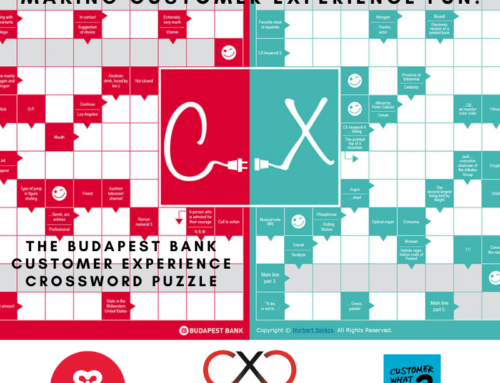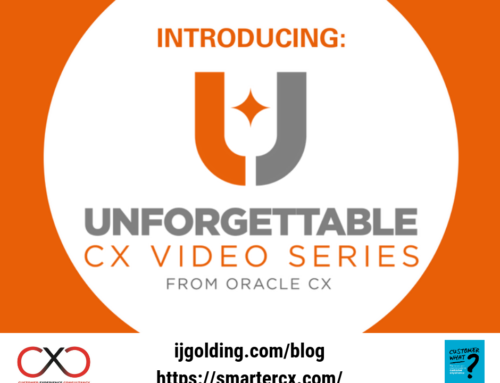
If you have ever worked in a company that is looking to improve its sales, often Customer Experience(CX) is defined as the solution. Normally a CX expert is drafted in and a workshop created for the key stakeholders. This often generates initial clarity and in some cases a Level ‘0’ or Level ‘1’ model is produced. It is generally agreed that the model should be communicated and a plan developed to tackle the issues raised.
I have been fortunate to attend a few of these with differing results. Although the most difficult, mainly due to more senior people being in the room, a ‘no holds barred’ approach generates the best results.
To be honest, that’s the really easy bit! The difficultly lies moving forward with a plan that gets updated with customer needs and demands. In my opinion, the following points should be considered and addressed…
- Ownership. You may use a consultant to help facilitate the workshop and even help draft a plan, however it is more likely that you will know more about your industry and customers that he or she does. Therefore, the company own the plan. Sounds simple right? I have heard consultants blamed for not delivering the change quickly enough, when in fact in nearly all cases I have been involved in, this has been down to the organisation itself. Roles and responsibilities needs to be defined and agreed at the initial stages, ideally in the workshop, so everyone is aware of their responsibilities. Ownership should always be the responsibility of the company itself!
- Visualise what you are trying to achieve. Sounds simple again right? Most companies often use a click and collect analogy when talking about their transformation. Often the word ‘Digital’ is used to describe the journey, but this is in fact, just the delivery method. As part of the workshop try to imagine an end to end scenario where a customer procures and uses your services/products. Visualising it helps to understand what the goal of CX is! It also helps you to articulate the end goal to a colleague or customer easily?
- Keeping track of progress – Milestones! The transformation to your end goal could be a long process over many years and difficult for your organisation to understand if you are making good progress or not. Breaking this down into milestones allows you to monitor but also remind the company that we are on track. In most cases the plan will change during the timeframe so milestones are vital for keeping on track. Milestones should be used to allow you to focus on the next tasks but not forgetting to glance back.
- We will make the CX changes when we have time after we have done the day stuff! The biggest issue I have found so far is people are too busy to make the changes needed. Often doing things that wont affect the journey at all but they have always been done. This, in my experience, is one of the most difficult things to change. Asking a very simple but really tough question “what would happen if I just didn’t do this?” is key. Once you have answered this you can ask the question “how does this help with our customer journey?”. This approach will only work if a senior exec member can highlight the things that are going to stop and get full senior buy in from the team. Stopping doing the non-essential tasks frees people up and helps them understand why they are doing something.
- What’s in it for me? Most likely everyone at the workshops understands why you are doing this but what about the people not in the workshop, for example the yard operative or front of desk rep. We are asking them to buy in, yet they need to know how it will benefit them. Often these guys are the face of the business, e.g. delivery or collection agents, so they need to be included in the plan! Once people see how it will affect them, they might not agree with it, but you can address any issues they have.
- Communication throughout the whole journey is key. Communication is often perceived as “how do we get our message out?” which is valid but rarely do people think about how do we create an environment for all members to communicate. In some organisations this would be best served through a technology solution, e.g. an intranet, but in others it might be a network of trusted change agents, a much more hands on approach.
- Celebrate success. Obviously if a milestone is achieved then celebrate, however you shouldn’t necessarily wait either. If there is one customer who becomes an advocate then celebrate and let everyone know. Creating a positive feeling will help show others that the plan is progressing. Creating this celebrating culture is a key part of the journey and can often help others who are experience challenges with their own area of change.
- BAN the blame culture! With a culture that is looking to blame others, this journey will never succeed. You should focus on creating an organisation that is more open to sharing and one that’s learns from its mistakes, not one that gets penalised for making honest errors. If the barrier can be broken down it will create the most powerful organisation of all, one that grows from within and learns from each other!
Of course there are lots of other things to consider, like fitting existing agreed workloads into the workload, prioritisation of resources and handling events that weren’t planned, such as mergers or acquisitions. This may be addressed by a PMO or change department however they should be addressed! Technology is often considered the most important part of the journey, however the key to making CX work is more about changing the culture and behaviour of an organisation than any single programme of work. I use the following analogy to explain the journey.
“Imagine you are on a journey to London from Manchester. The most obvious choice would be to use the motorway network. That’s the initial plan, M56, M6 and then M1, but for any seasoned traveller this can be a gamble and it maybe that roadwork’s or a car accident means its not the best route anymore. Solely focussing on the journey travelled to date, wont give you the vision to make a timely detour. Road signs should show you that you are on the right track, London 100 miles, 50 miles etc. and these are key milestones, showing you are travelling in the right direction.”
Seems logical right, did you make the assumption that you were driving – perhaps the best journey was the train? Applied to business sense, assumptions and focussing on what has already happened (driving whilst looking in the rear view mirror) will not allow you to make decisions on upcoming issues.

Paul Clavering formed Just Enough, after gaining his experience and knowledge from multiple CX journeys. Just Enough focusses on delivery over governance (but not at the expense of!). He has worked in various industries, throughout Europe and the US, over the last 20 years including, Manufacturing, Hire, Internet of Things. He has delivering change for organisations of various sizes (£30 Million – £5 Billion). He is available to help organisations deliver change no matter what road works lie ahead.







Leave A Comment